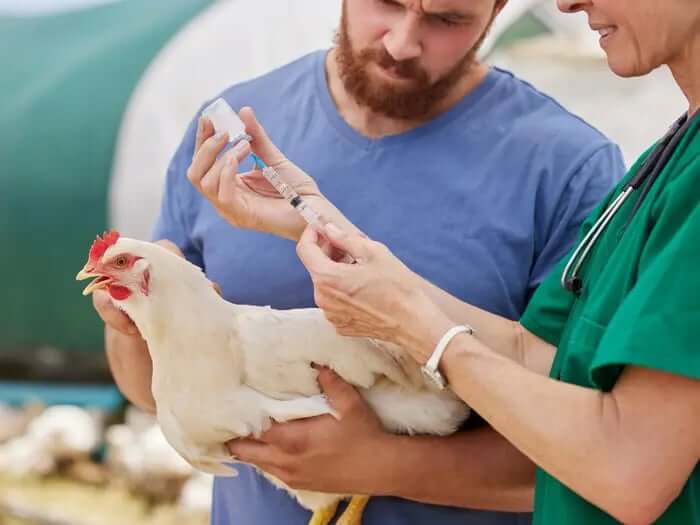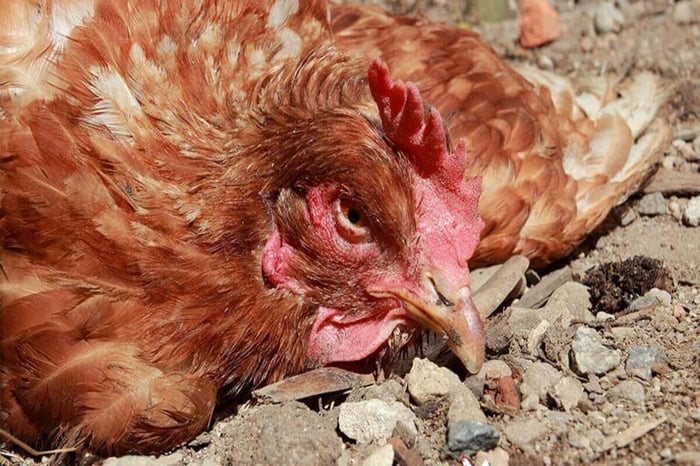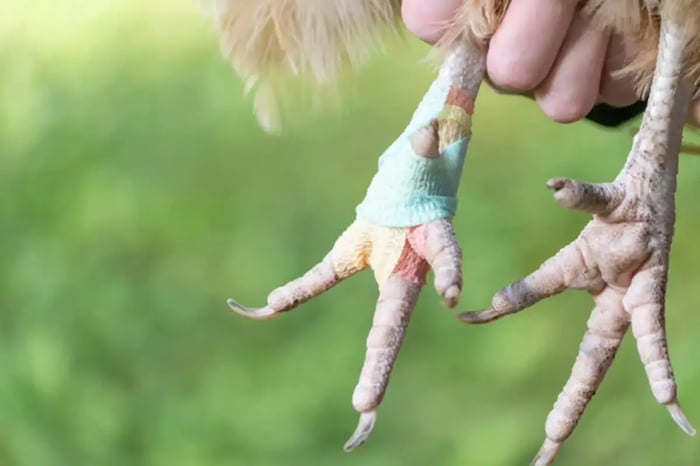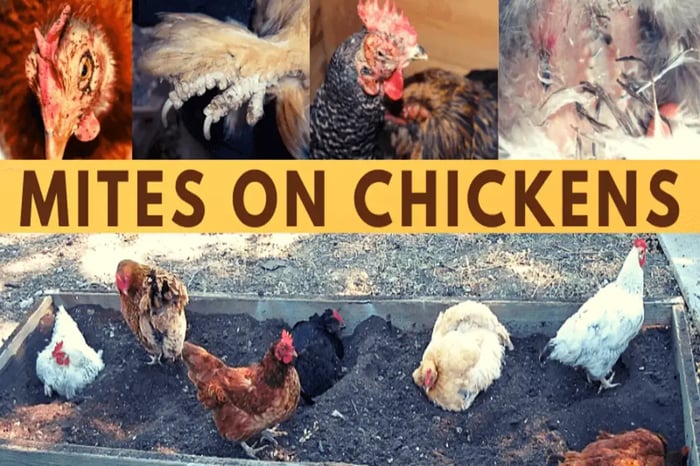Chicken mites treatment is essential to protect your flock from the harmful effects of these parasites. Effective treatment involves identifying the specific type of mite infesting your chickens and applying appropriate methods to eliminate them quickly. Treatments range from natural remedies like diatomaceous earth and neem oil to chemical options such as Spinosad and permethrin sprays. Early and consistent chicken mites treatment not only relieves your birds’ discomfort but also prevents anemia, feather loss, and reduced egg production.
In this guide, we will explore various chicken mites treatment options, including how to apply them safely and how to maintain a clean coop to prevent reinfestation.
What are Chicken Mites?
Chicken mites are tiny parasitic arachnids that feed on the blood and skin of chickens. Despite their small size—often less than 1 millimeter—they can cause big discomfort and health issues for your birds. There are several species of mites that affect chickens but the most common are:
Red Poultry Mite (Dermanyssus gallinae): These mites are nocturnal blood feeders that hide in the coop during the day and come out at night to feed on chickens. They appear as tiny red or black dots and can multiply fast.
Northern Fowl Mite (Ornithonyssus sylviarum): Unlike the red mite, northern fowl mites spend their entire life cycle on the bird, especially around the vent area.
Scaly Leg Mite (Knemidocoptes mutans): These mites burrow under the scales on the legs and feet of chickens, causing thickened, crusty and raised scales that can lead to lameness.
Feather Mites: These mites live on the surface of feathers and generally cause less harm but can still irritate the bird.
Each type of mite has its own habits and preferred location on the bird but all cause irritation, stress and potential health issues if not treated fast.
Why are Chicken Mites a Problem?
Mites not only irritate your chickens but can also cause:
Anemia: Because mites feed on blood, heavy infestations can cause anemia, pale combs and wattles, weakness and even death in severe cases.
Stress and Behavioral Changes: Constant itching and irritation cause chickens to become restless, lose sleep and reduce their natural behaviors like foraging.
Reduced Egg Production: Stressed and unhealthy hens will lay fewer eggs or stop laying altogether.
Feather Loss and Skin Damage: Mites cause feather damage and can create open wounds which can lead to secondary infections.
Spread of Disease: Mites can be vectors for disease, further threatening flock health.
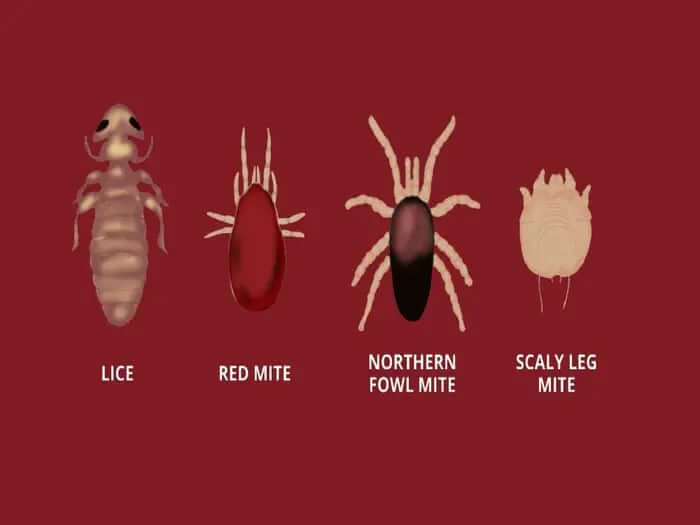
How to Identify Chicken Mites Early
Early detection is key to control. Here’s how to spot mites in your flock:
1. Observe Behavior
Chickens infested with mites will:
Scratch and peck themselves excessively.
Rub against objects to relieve itching.
Be restless or agitated, especially at night (when red mites feed).
2. Physical Signs on the Bird
Look under the wings, around the vent and on the neck and back: These are common feeding sites for northern fowl mites.
Check legs and feet for scaly leg mites: Look for thickened, crusty or raised scales.
Inspect feathers for damage or loss.
Examine the skin for small moving dots: Red poultry mites are visible to the naked eye, especially at night, and look like tiny red or black specks.
3. Inspect the Coop
Red poultry mites hide in cracks, crevices and nesting boxes during the day. Look for tiny moving specks or rusty spots on wood or bedding.
Use a flashlight to inspect dark areas of the coop.
Fast and Effective Chicken Mites Treatment Options
Once you confirm the presence of mites, action is needed to prevent the infestation from getting worse. The best chicken mites treatment depends on the type of mite, severity of infestation and your preference for natural or chemical methods.
1. Spinosad-Based Treatments: The Gold Standard
Spinosad is a natural insecticide derived from soil bacteria and is highly effective against poultry mites. It kills mites on contact and also targets their eggs, breaking the life cycle quickly.
How to Use: Mix Spinosad concentrate (such as Elector PSP) with water according to label instructions (usually 9 ml per gallon). Spray the solution directly on chickens, focusing on under the wings, around the vent and on the legs. Also, spray the coop, especially cracks and crevices.
Pros: Safe for chickens, no egg withdrawal period, fast-acting and effective on all mite life stages.
Frequency: Usually requires two treatments 7-10 days apart to ensure all mites and eggs are gone.
2. Diatomaceous Earth (DE): Natural and Cheap
Diatomaceous earth is a powder made from fossilized algae that physically damages mites’ exoskeletons, causing them to dehydrate and die.
How to Use: Dust chickens lightly with food-grade DE, focusing on feather bases and legs. Sprinkle DE everywhere in the coop, nesting boxes and bedding.
Pros: Non-toxic, natural and safe for chickens and humans.
Cons: DE only kills live mites, not eggs, so repeated applications are necessary. Can irritate respiratory tracts if inhaled, use with caution.
3. Neem Oil and Petroleum Jelly for Scaly Leg Mites
Scaly leg mites need a different approach as they burrow under the scales.
How to Treat: Soak the affected legs in warm water with mild soap to soften scales. Apply neem oil to suffocate mites, then coat legs with petroleum jelly to seal the treatment. Repeat weekly for several weeks.
Pros: Natural, non-toxic and effective for scaly leg mites.
Precautions: Be gentle to avoid hurting the bird’s legs.
Scaly leg mites burrow under the scales on the legs and feet of chickens, causing thickened, crusty, and raised scales that can lead to lameness. To treat, soak the affected legs in warm soapy water to soften scales, then apply neem oil to suffocate mites and coat legs with petroleum jelly to seal the treatment. Repeat weekly for several weeks. For an effective herbal alternative, try Savealeg - Herbal Leg Salve For Scaly Leg Mites, which is easy to apply and helps protect and restore your flock’s legs naturally.
4. Chemical Treatments: Ivermectin and Permethrin
For severe infestations some people use chemical treatments like ivermectin or permethrin sprays.
Ivermectin: Can be given orally or by injection but often requires an 8 week egg withdrawal period which can be inconvenient.
Permethrin: A topical spray that kills mites on contact. Use with caution and follow label directions.
Note: Chemical treatments should be a last resort, used responsibly and in combination with thorough coop cleaning.
Cleaning and Preventing Mite Infestations
Treating your chickens alone is not enough. Mites can survive in the environment and reinfest your flock if the coop is not cleaned properly.
Step 1: Remove and Replace Bedding
Get rid of all old bedding and litter. Mites can survive in bedding material so fresh clean bedding is essential.## Step 2: Clean the Coop
Scrub all surfaces with hot water and detergent.
Pay attention to cracks, corners, nesting boxes and roosts where mites hide.
Remove and clean feeders and waterers.
Step 3: Apply Mite Treatment
Spray the coop and surrounding areas with mite sprays like Spinosad or permethrin-based products.
Let the coop dry before putting the chickens back in.
Step 4: Keep it Dry and Clean
Mites love humid and dirty conditions. Keep the coop dry and well-ventilated.
Clean and replace bedding regularly.
Don’t overcrowd your flock.
Step 5: Monitor
Check your flock weekly for early signs of mites.
Use mite traps or sticky tape in the coop to monitor mite presence.
Natural Remedies and Prevention
If you don’t want to use chemicals there are several natural remedies and prevention methods:
Herbs: Some herbs like lavender, mint and rosemary repel mites. Plant them near the coop or add dried herbs to bedding.
Dust Baths: Provide your chickens with access to dust baths with fine sand, wood ash or diatomaceous earth. Dust baths help chickens naturally remove mites.
Essential Oils: Oils like tea tree or eucalyptus can be diluted and sprayed on chickens and coop surfaces but use with caution to avoid irritation.
Other Chicken Mites Treatment Options and Prevention
In addition to Spinosad and diatomaceous earth, there are other chicken mites treatment options and prevention methods to keep your flock mite-free.
Alternative Methods
Dawn Dish Soap Baths: Gently bathe your chickens in warm water with a mild dish soap like Dawn to physically remove mites from feathers and skin. Focus on mite areas like under the wings and around the vent. This reduces mites quickly but should be combined with other treatments for lasting control.
Elector PSP and Permethrin Sprays: Elector PSP is a Spinosad-based spray safe for poultry and kills all mite life stages without an egg withdrawal period. Permethrin sprays kill mites on contact and can be used on birds and the coop but always follow label instructions.
Natural Care Flea and Tick Home Spray: For chemical-free options, this spray controls mites without harming chickens or the environment.
Dust Baths: Provide dust baths with fine sand, wood ash or a mix of First Saturday Lime and mite-repelling herbs like lavender and rosemary so chickens can dust themselves to remove mites.
Environmental Cleaning and Prevention
Chicken mites treatment includes cleaning the coop environment where mites hide during the day:
Remove and replace old bedding and litter regularly to get rid of mite habitats.
Scrub coop surfaces, especially cracks, corners, nesting boxes and roosts with hot water and detergent.
Spray mite sprays like Spinosad or permethrin and dust diatomaceous earth in the coop to kill mites in hiding spots.
Keep the coop dry and well-ventilated, mites love humid and dirty conditions.
Don’t overcrowd your flock to reduce stress and parasite spread.
Monitor your flock weekly with mite traps or sticky tape and watch for early signs of infestation.
New Chicken Mites Treatment Ideas
Research is ongoing into new chicken mites treatment options including:
Plant-based essential oils with mite-repelling properties like neem, tea tree and eucalyptus oils applied carefully to avoid irritation.* Biological controls using predatory mites or fungi that kill mites without chemicals.
Experimental vaccines to boost chicken immunity against mites so they don’t get infested in the first place.
By using these other chicken mites treatment options and cleaning and preventing, you can keep your flock mite-free and have healthier, happier chickens and more eggs
Final Thoughts: Act Fast to Protect Your Flock
Mites in chickens are a nuisance but manageable. The key is early identification and fast, effective chicken mites treatment and thorough coop cleaning and prevention.
By knowing the types of mites, recognizing the symptoms and using treatments like Spinosad sprays or natural remedies like diatomaceous earth and neem oil you can keep your flock comfortable, healthy and productive.
A mite free coop means happy chickens and better eggs. Be vigilant, act fast and your girls will thank you!
If you found this helpful share with fellow chicken keepers to help protect more flocks from chicken mites.
FAQs
What are chicken mites and why are they a problem?
Chicken mites are tiny parasites that feed on the blood and skin of chickens. They cause itching, stress, anemia, feather loss, and can reduce egg production. If left untreated, mites can seriously harm your flock’s health.
How can I tell if my chickens have mites?
Look for signs like excessive scratching, restlessness (especially at night), feather loss, pale combs, and small moving dots on the skin or feathers. Inspect under wings, around the vent, and on legs for mites or crusty scales.
How do I treat scaly leg mites specifically?
Soak the affected legs in warm soapy water to soften scales, then apply neem oil or an herbal leg salve like Savealeg. Coating legs with petroleum jelly helps seal the treatment. Repeat weekly until healed.
How often should I treat my chickens for mites?
Most treatments require at least two applications spaced 7-10 days apart to kill newly hatched mites. Regular monitoring and coop cleaning help prevent reinfestation.
Can mites come back after treatment?
Yes, mites can survive in the environment and reinfest your flock if the coop isn’t properly cleaned and maintained. Regular coop hygiene and monitoring are essential for long-term control.


.png)
